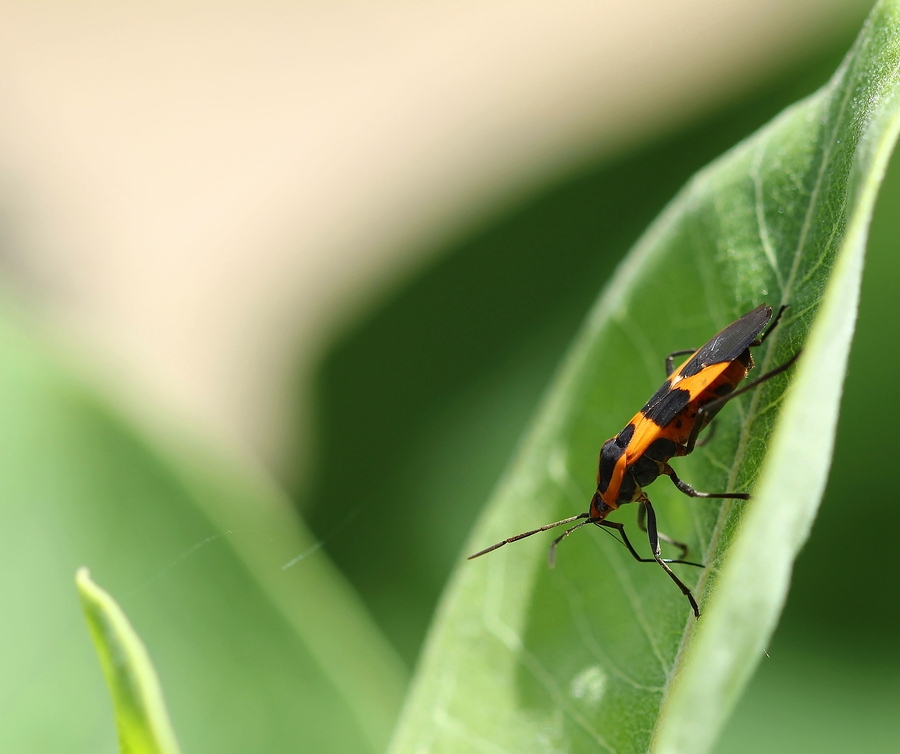Occasional Invaders: boxelder bugs, cluster flies, and clover mites
- Details
 While everyone is very familiar with the typical pests like termites and bed bugs, what about pests that only come around every so often? These occasional invaders often catch homeowners by surprise and can cause serious stress to you and your family. The team at Eagle Pest Services has put together this guide to help you learn about occasional invaders and how to prepare for a surprise infestation.
While everyone is very familiar with the typical pests like termites and bed bugs, what about pests that only come around every so often? These occasional invaders often catch homeowners by surprise and can cause serious stress to you and your family. The team at Eagle Pest Services has put together this guide to help you learn about occasional invaders and how to prepare for a surprise infestation.
Boxelder Bugs
Boxelder bugs get their name from the boxelder trees that they feed on. These insects are ovular in shape and are roughly half an inch long. They are most easily recognized by their black coloring and the reddish-orange markings on their backs.
While these insects do not typically damage our homes, the can invade in very large numbers. In the fall, in particular, boxelder bugs gather and swarm until they can find a place to overwinter. These insects often gather on the sunny side of a building before taking flight and finding their home for the winter. This can cause staining to the home and can be a real nuisance to building owners.
Oftentimes, while they search for a place to overwinter, boxelder bugs will find their way into the cracks in the side of trees, homes and other buildings.
Cluster Flies
Much like boxelder bugs, cluster flies have made our list of occasional invaders because of their overwintering habits. In fact, cluster flies behave in a remarkably similar way to boxelder bugs. Cluster flies are slightly larger than common houseflies and get their name from the “cluster” that they form on the side of buildings and other sunny surfaces. Much like boxelder bugs, cluster flies can infiltrate your home in search of a good spot to overwinter. They may find their way in through a vent or a small crack in between your siding, leaving you with a full-blown infestation in no time.
Clover Mites
Even if you haven’t noticed it, you’ve probably seen a clover mite before. These incredibly small, bright orange bugs are no bigger than a pinhead and often travel in large numbers. One of the most unique things about this pest is that most of its activity occurs as the weather cools. When temperatures drop in the fall, clover mites gather and begin consuming large amounts of clovers, grass, and other plants. They can also be common pests in the early springtime when temperatures increase sharply.
Clover mites typically find their way into homes by moving from nearby vegetation. While they do not pose a threat to your family’s health, they can cause damage to the inside of your home. If crushed, these bugs leave behind a bright orange stain that can be seen on walls, ceilings, rugs, curtains, and other types of fabric.
Prevention
With any of these occasional invaders, once an infestation occurs, it can be tricky to manage. That’s why prevention is key. With all of these pests mentioned above, the easiest way to prevent an infestation is to seal your home thoroughly at least once a year. Spray the exterior of your home with a residual insecticide to prevent them from swarming on surfaces, and regularly maintain outdoor surfaces to make sure all cracks and holes are sealed. That way, if these pests do invade, they’ll have nowhere to hide. You should also remove any vegetation that is within 24 inches of your home to help make sure your home is safe from plant-eating pests like clover mites.
Our team understands that even with helpful tips like these, sometimes unwanted pests can be persistent, especially if they have found their way into your home already. If you’re concerned about a pest control issue in your home, contact the professionals at Eagle Pest Services by calling 1-(866) 281-1822 or visit our website to schedule an inspection today. Our staff will work alongside your family to keep your home pest-free all year long.





